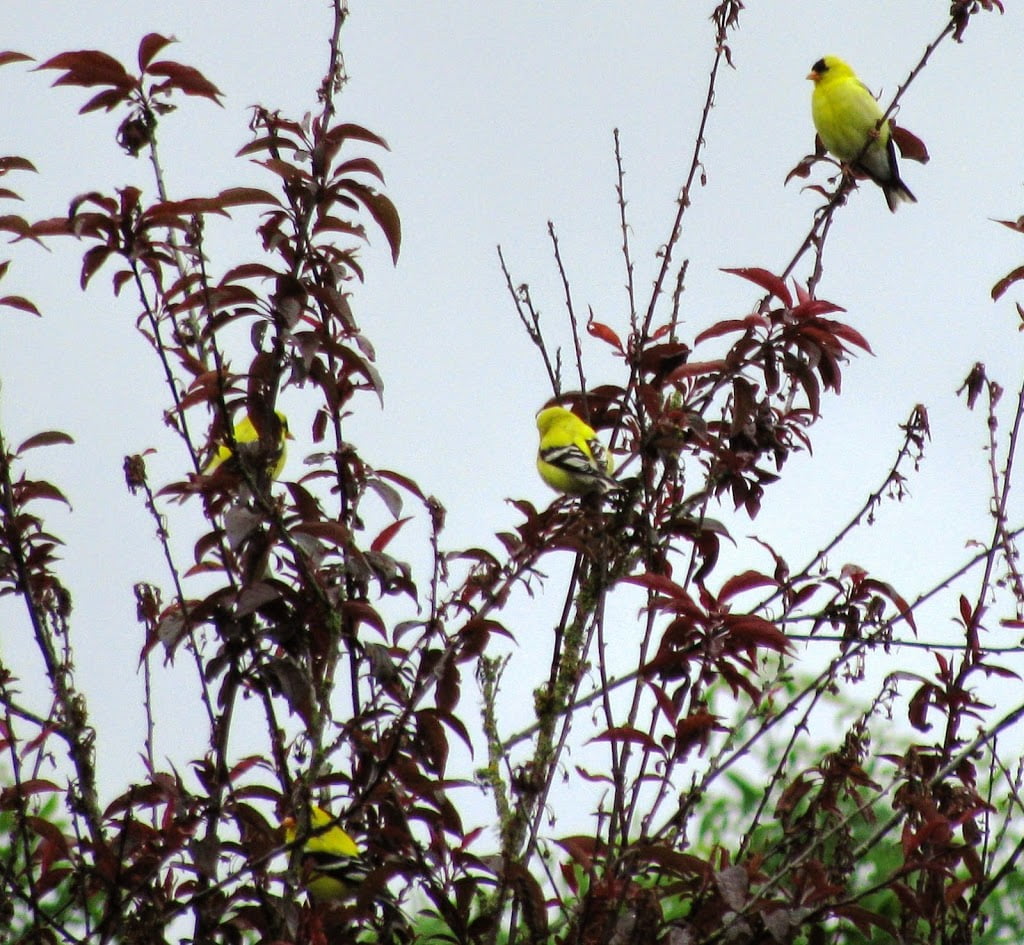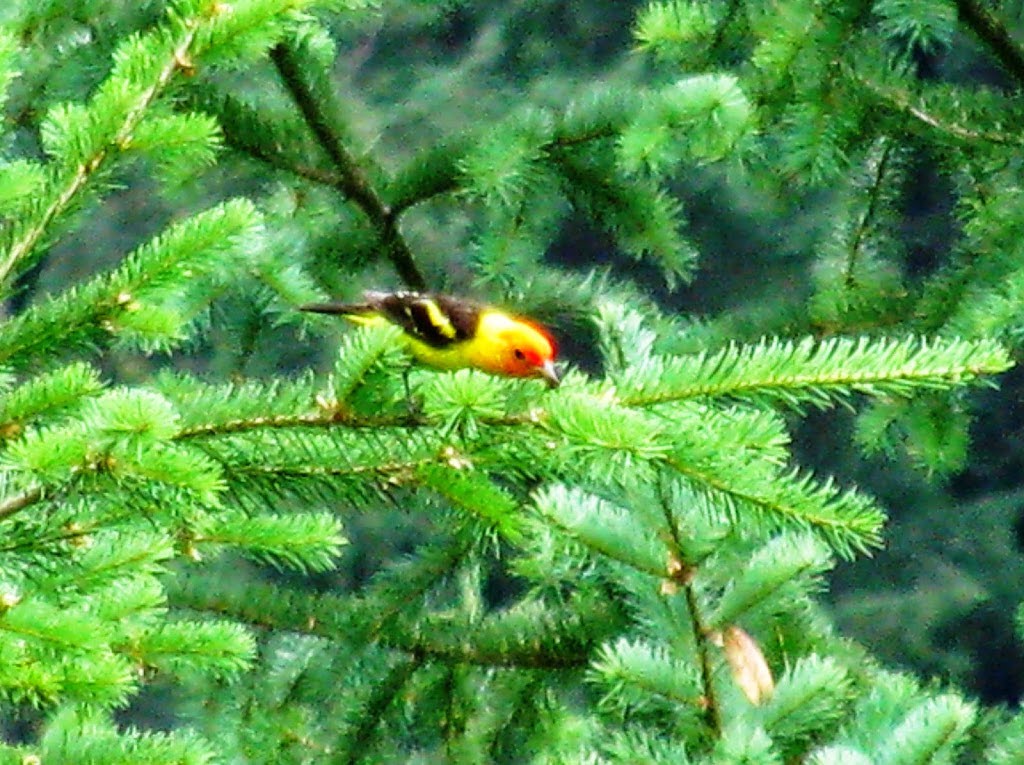Let’s hear it for the birds
After the long hours of staring at the ground, it’s nice to give that neck a stretch and look up! In this weeks’ blog, I (Amy) want to give a shout out to those little flying machines that have been serenading us with sweet melodies during our long work days.
 |
| American goldfinches perched near a field site in Corvallis, OR. Photo credit: Emma Macdonald |
I came to IAE as a long time bird enthusiast. By spending time working with plants and plant communities, I have become even more aware of the strong connection between plant communities and bird diversity. Much of the work done here at IAE, such as clearing invasive species and opening up meadow habitat, improves habitat quality and increases plant species diversity. These improved plant habitats are also important nesting and foraging grounds for many species which are threatened by habitat loss and fragmentation. Working in these unique areas provides an opportunity to hear (and occasionally see) birds that are less common in more urban spaces. To give you an idea of how many species can be heard during any given day, here is a bird list that I made on May 7th:
 |
| common yellowthroat |
brown headed cowbird
common yellowthroat
 |
| lazuli bunting |
great blue heron
 |
| savannah sparrow |
savannah sparrow
These birds were all heard at our Sidelcia nelsoniana sites at Tyee Wine Cellars. Tyee is just outside of Corvallis, and has committed 246 acres of wetland habitat into a Wetland Reserve Program. The program is a part of a conservation easement in cooperation with U.S. Natural Resources Conservation Science that protects wetland habitat for 30 years. This site has become a plant and bird haven. Birders have spotted over 150 different species on their property. You can visit Tyee and hike the 1.5 mile loop around Beaver Pond.
Now to test the birder in you. Do you know who this bird is?
 |
| Photo credit: Emma Macdonald |
It’s a western tanager! He certainly is a stunning little songbird and easy to distinguish by his bright red head and yellow body. Unfortunately, you can’t always get a look at them! The song of the western tanager is a three part melody and can sound similar to the American robin. One way to tell them apart is that the tanager’s song is shorter and more gruff. They also have a very distinctive call note which sounds like “piterick”. Have a listen to these two songs and see if you can tell the difference.
http://www.allaboutbirds.org/guide/western_tanager/sounds
http://www.allaboutbirds.org/guide/American_Robin/sounds
In all that we do, it is important to look at the big picture and to remember the interconnection between all species and processes. IAE’s research and restoration plays a part in preserving the diversity of ecosystems, from the ground all the way up to the birds!
